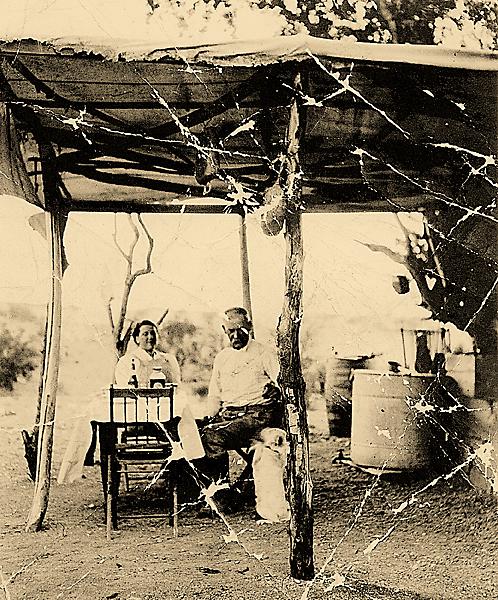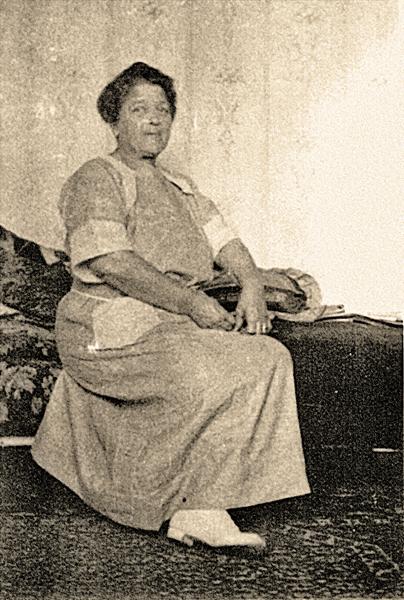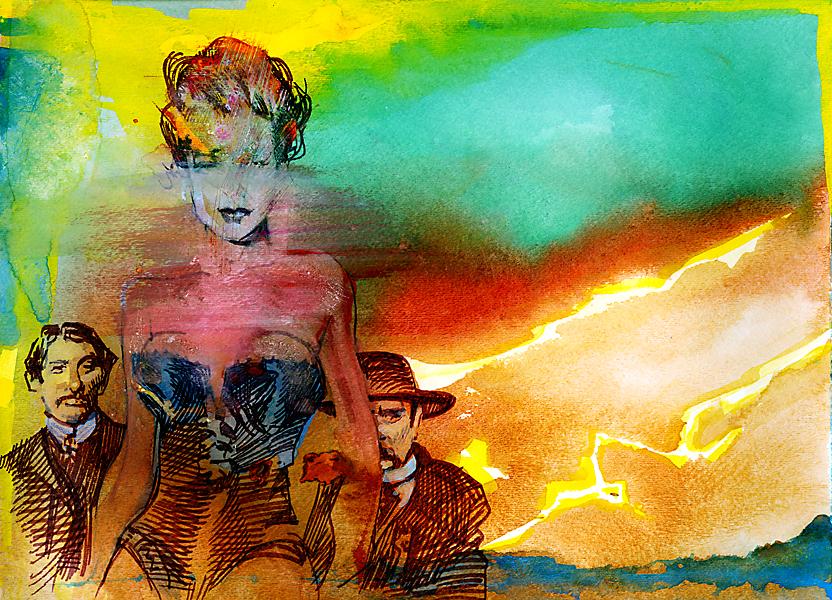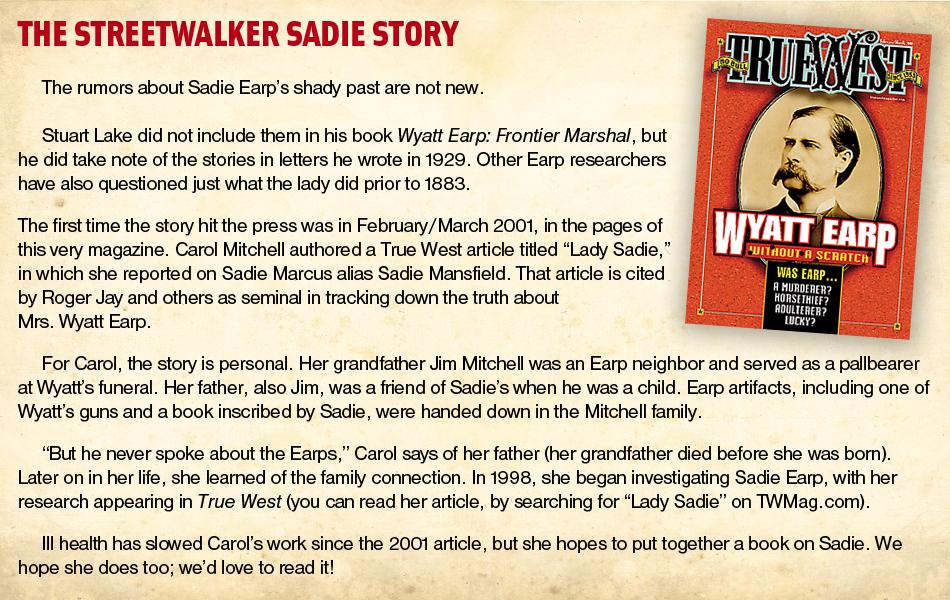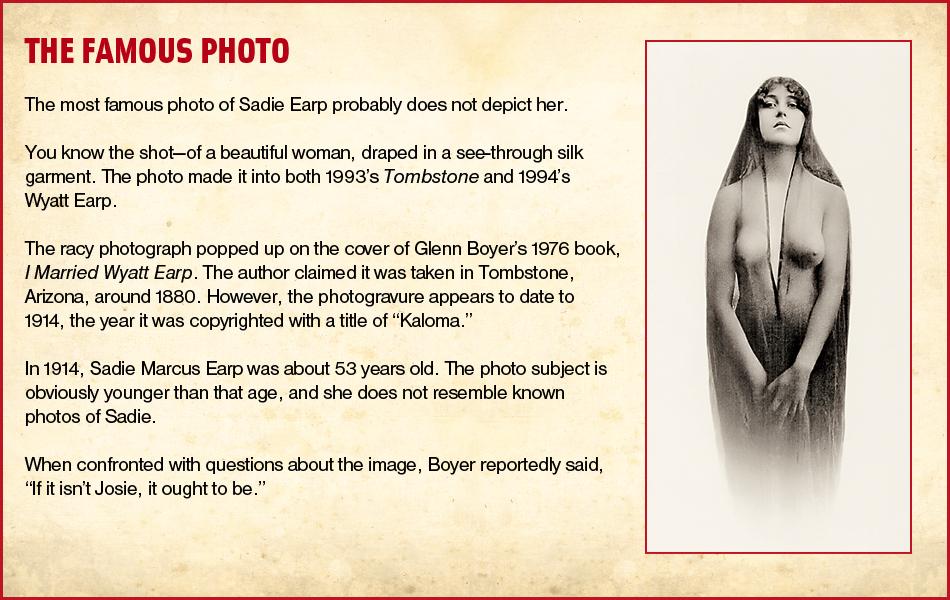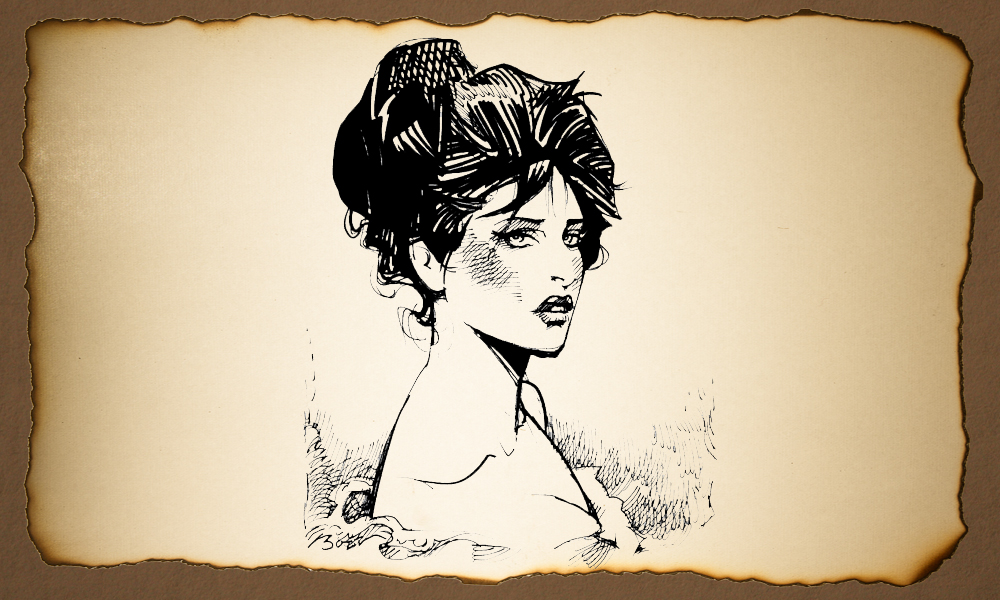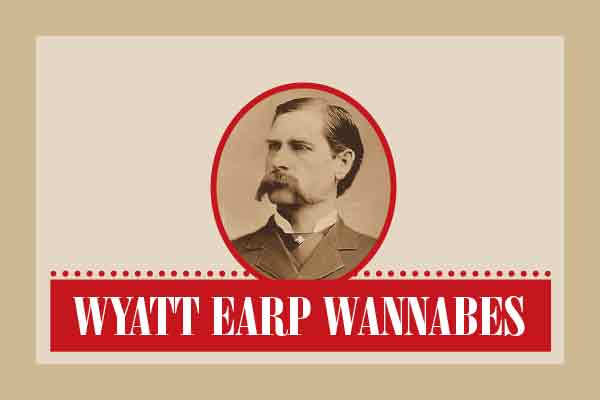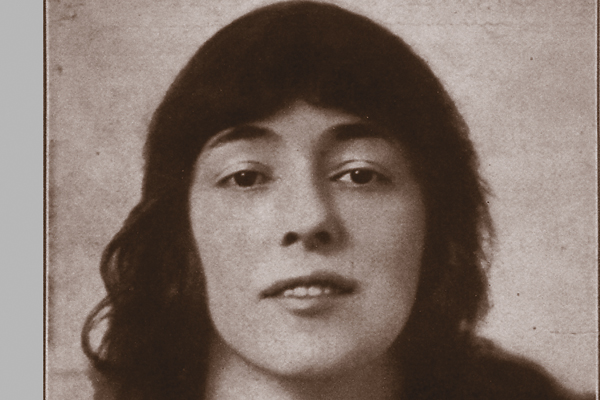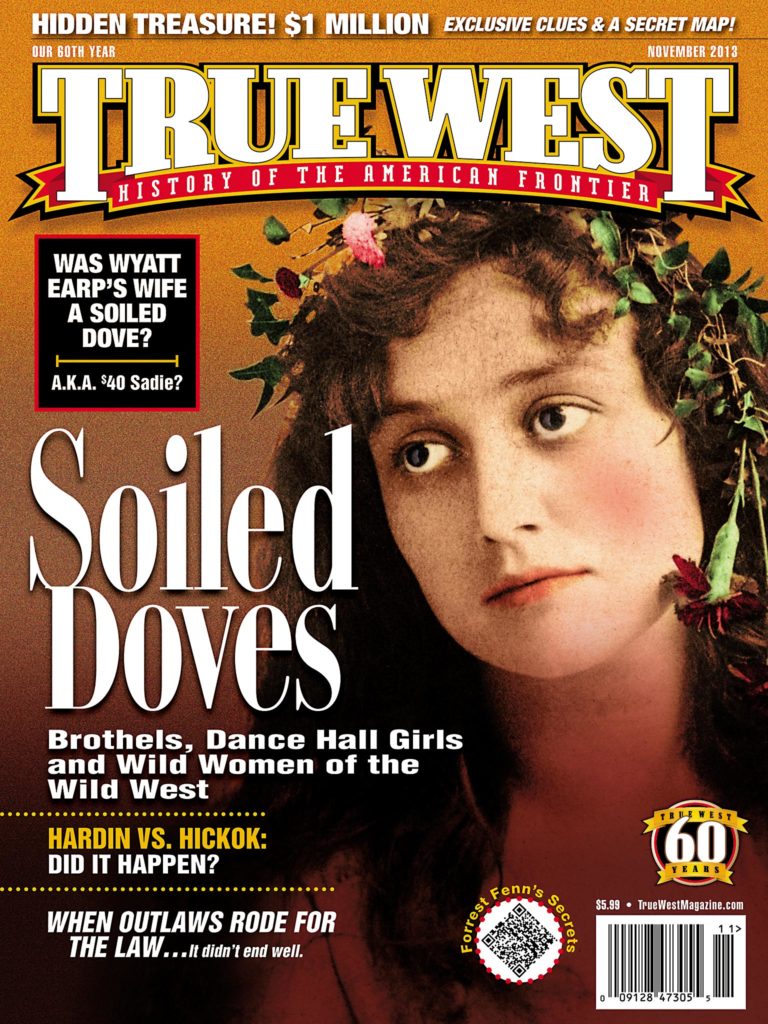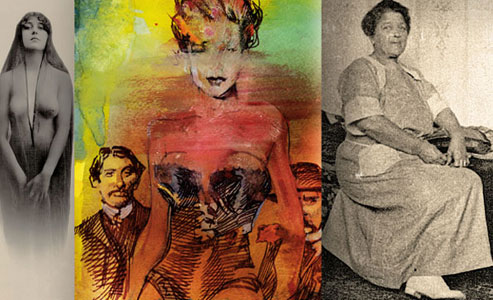 Josephine Sarah Marcus Earp fancied herself an actress. In later life, she told folks about her adventures in a drama troupe that traveled the wilds of territorial Arizona, presenting Gilbert and Sullivan theatricals to crowds in the dusty frontier and mining towns.
Josephine Sarah Marcus Earp fancied herself an actress. In later life, she told folks about her adventures in a drama troupe that traveled the wilds of territorial Arizona, presenting Gilbert and Sullivan theatricals to crowds in the dusty frontier and mining towns.
But the lady’s greatest acting job—arguably—was her own life. During those later years of her life, in addition to burnishing the life and legend of husband Wyatt Earp, she scripted a history of make believe to hide a number of things of which she was not terribly proud. Josie, as she then called herself, saw it as an avenue toward respect, riches, social prestige and, perhaps, redemption. Woe to those who dug deep, looking for the truth.
She did not reach her goal. She still is best known as Wyatt Earp’s third and last wife, and the money from her history never came in. Now, nearly 70 years after her death, some of her secrets are coming out.
But first, let us give the woman her due. After all, she came up with a heck of an autobiography. Then we’ll look back to discuss the truth behind the legend.
Josie’s Journey
Josephine first started telling her story to Wyatt’s cousins Mabel Earp Cason and Vinnolia Earp Ackerman in the late 1930s. Born in New York City, New York, around 1861, she told the sisters that she was the daughter of German immigrants who had made good as merchants after moving to San Francisco, California, in 1869. During her lively and privileged childhood, she frequently saw shows at the theatre.
In 1879, Josie had a chance to reach her own acting dream when she and a friend joined the Pauline Markham troupe. From San Francisco, they headed by stagecoach to Arizona, where they offered a take on Gilbert and Sullivan’s musical “H.M.S. Pinafore.” At the end of that year, Josie met John Behan, a divorced deputy sheriff 17 years her senior, at a ranch house outside Prescott.
By late January 1880, the Markham show had finished its run in Arizona and Josie returned to San Francisco, California. Behan continued to woo her, in person and through emissaries. At the end of the year, Josie gave in to his pleas and returned to Arizona. She moved in with a lawyer and his wife while serving as a housekeeper for Behan and his eight-year-old son Albert. She waited for the wedding day Behan kept promising.
The unreliable Behan kept putting off the marriage, even though Josie called herself Mrs. Behan. He used Josie’s money (supposedly sent by her parents) to buy a house. Josie got fed up with it all and broke up with Behan in 1881—before the legendary gunfight behind the O.K. Corral.
Somewhere in all this, Josie met Wyatt Earp. She was not clear on the specifics in her autobiography.
Josie moved back in to her parents’ home in San Francisco. Sometime in late 1882, she crossed paths with Wyatt—and they began their 47-year partnership.
They didn’t actually marry until 1892, when a captain aboard a friend’s yacht tied the knot for them off the coast of Los Angeles. In any case, the happy couple lived an idyllic, if nomadic, existence. As the closing narration from the 1993 classic Western Tombstone put it, “Wyatt and Josephine embarked on a series of adventures. Up or down, thin or flush, in 47 years, they never left each other’s side.”
Sadie’s Saga
Josie was called Sadie by one and all—until soon after Wyatt’s death, when she insisted on being called Josie or Josephine.
Sadie’s parents were Polish Jews from Germany, a group held in low esteem, even by other Jewish émigrés. Hyman Marcus worked among the working poor as a baker. Sadie—who was born in New York City—grew up in hardscrabble circumstances in the tenements of San Francisco, California.
Like Josie described to Wyatt’s cousins, Sadie loved the theatre and dreamed of becoming an actress. She may have seen a fair number of productions as she grew up in San Francisco.
Sadie Marcus’s name was not on the Markham troupe’s rolls in 1879. But perhaps that is because Sadie wanted to create a scenario in which she had actually lived out her dream to be an actress. If she was part of the troupe, then she was not correct in how she traveled to Arizona Territory: by 1879, she would have traveled by train. We know this because six members of the Markham troupe left for Arizona in October 1879 by Southern Pacific Railroad.
Given that Sadie was recalling her experiences when she was in her 70s, she probably remembered the mode of transport more than the precise year. That she recalled traveling by stagecoach points to her taking the trip earlier, perhaps in 1874, the year for which we have evidence Sadie did first journey to Arizona, at the tender age of 14. If that’s the case, that might be when Sadie first met Johnny Behan—at a time when he was still married. More on that later.
Eventually, Sadie moved in with Behan and his son. Unlike how Josie reported the arrangement, Sadie did not live with a lawyer.
The historical record also does not show when Sadie met Wyatt Earp or how their relationship may (or may not) have blossomed in Tombstone.
In 1881, she threw Behan out after catching him in bed with a friend’s wife. She continued to look out for his son, Albert, who would be a lifelong friend. Consistent with Josie’s account, Sadie returned to San Francisco, California, in 1881—where Wyatt would come for her the following year.
We have not found any evidence that Wyatt and Sadie officially married. Their relationship was stormy, according to accounts by many who knew them. Sadie was frequently a harpy, griping at various points about Wyatt’s character and personality and his lack of occupational and financial success. Wyatt often went for long walks to get away from her. He became incensed by her gambling habit, which resulted in the loss of a lot of their money over the years. Each may have engaged in extramarital affairs.
Oh, and Sadie’s attempt to write her life with the Earp kin? The sisters ultimately dropped the project, in part because Sadie was hard to work with, but also because she was vague about so many aspects of her life (and some things just did not add up). She refused to even talk about what happened in 1881-82, the key years in Tombstone. The so-called Cason Manuscript is what remains of the work.
Mrs. Wyatt Earp’s Secret
So why did Sadie—we’ll call her that, since it was her primary nickname in life—go to such lengths to hide her past?
Make no mistake, she was successful in her ploy; the name Sadie is not mentioned in Stuart Lake’s Wyatt Earp: Frontier Marshal, or the other Tombstone books of that era. You won’t find any Josephine Sarah Marcus in any of the Earp movies, either, up until Tombstone in 1993.
Ann Kirschner, in her recent biography Lady at the O.K. Corral, believes Sadie hid that name from the public because she was embarrassed about the love triangle involving Wyatt and Behan, or that she was touchy about breaking up Wyatt and common-law wife Mattie.
Others believe the truth is deeper than that. That’s where Sadie Mansfield comes in. You see, Mansfield was a soiled dove—and some evidence suggests she was Marcus. (The idea that Marcus may have been Forty-Dollar Sadie, another prostitute in Cochise County, was rejected by Lake in 1929 because she was not in Tombstone during 1881-82.)
Building off of the Mansfield theory first presented in the pages of True West, in 2001, Earp researcher Roger Jay—who previously uncovered Wyatt’s early career as a brothel bouncer—stated the case in the February 2013 issue of the Wild West History Association Journal. His report is a bit involved and relies on circumstantial evidence, but you should read the full article, if you get the chance. Here is an overview of what he reported:
• Census data from 1880 shows the two Sadies were the same age, born in New York to German parents and grew up in San Francisco, California. (Jay posits that the Marcus family counted their daughter as residing in the family home when the census called on them in San Francisco, while Josie reported her true status to the census taker in Tip Top, Arizona.)
• The names are remarkably similar.
• Mansfield went to Arizona by stagecoach in 1874—an almost identical journey to the one Marcus said she took in 1879, which does not coincide with the historical record.
• On that 1874 trip, Mansfield was traveling with a group of prostitutes. One of the prostitutes accompanying her was a black woman named Julia. Marcus recounted a black woman named Julia traveling with her on the phony 1879 trip.
• Marcus claimed that during her 1879 trip to Arizona, she ran into a military patrol led by the famed scout Al Sieber. But Sieber wasn’t in that locale in 1879; he was there around 1874, when Mansfield arrived by stagecoach.
• Mansfield took up her trade in Prescott in 1874, and one of her regular “visitors” was Johnny Behan. In fact, he saw he her so often, she was mentioned in Victoria Behan’s 1875 divorce complaint against her husband.
• Evidence supports the claim that Behan and Mansfield were in the same locales—sometimes together—over the next several years. That includes the time when Behan was supposedly wooing Marcus.
• Marcus said she accepted Behan’s proposal of marriage in 1880 and went to live with him. At that same time, documents show that Mansfield went to live with Behan in the town of Tip Top.
• In 1881, documents bearing the names of Josephine Marcus, Josephine Behan and Sadie Mansfield appear. Is this evidence of Marcus using all three handles?
Jay’s research is fascinating, although he does not offer irrefutable proof by any means. In fact, Kirschner does not believe Jay’s research adds up to Josephine Sarah Marcus working as a whore (she says it wasn’t in Sadie’s character to do so).
His work does provide some important leads for future research into the love of Wyatt Earp’s life. Perhaps over time, the mask that Josephine Sarah Marcus Earp presented to the world will be pulled away, and the truth about this remarkable woman—and she was remarkable—will come out. The play will have to be rewritten.
For what it’s worth, before she died, Sadie supposedly put a curse on anyone who tried to tell her story. Maybe she will get the final word.
THE FAMOUS PHOTO
The most famous photo of Sadie Earp probably does not depict her.
You know the shot—of a beautiful woman, draped in a see-through silk garment. The photo made it into both 1993’s Tombstone and 1994’s Wyatt Earp.
The racy photograph popped up on the cover of Glenn Boyer’s 1976 book, I Married Wyatt Earp. The author claimed it was taken in Tombstone, Arizona, around 1880. However, the photogravure appears to date to 1914, the year it was copyrighted with a title of “Kaloma.”
In 1914, Sadie Marcus Earp was about 53 years old. The photo subject is obviously younger than that age, and she does not resemble known photos of Sadie.
When confronted with questions about the image, Boyer reportedly said, “If it isn’t Josie, it ought to be.”
THE STREETWALKER
SADIE STORY
The rumors about Sadie Earp’s shady past are not new.
Stuart Lake did not include them in his book Wyatt Earp: Frontier Marshal, but he did take note of the stories in letters he wrote in 1929. Other Earp researchers have also questioned just what the lady did prior to 1883.
The first time the story hit the press was in February/March 2001, in the pages of this very magazine. Carol Mitchell authored a True West article titled “Lady Sadie,” in which she reported on Sadie Marcus alias Sadie Mansfield. That article is cited by Roger Jay and others as seminal in tracking down the truth about Mrs. Wyatt Earp.
For Carol, the story is personal. Her grandfather Jim Mitchell was an Earp neighbor and served as a pallbearer at Wyatt’s funeral. Her father, also Jim, was a friend of Sadie’s when he was a child. Earp artifacts, including one of Wyatt’s guns and a book inscribed by Sadie, were handed down in the Mitchell family.
“But he never spoke about the Earps,” Carol says of her father (her grandfather died before she was born). Later on in her life, she learned of the family connection. In 1998, she began investigating Sadie Earp, with her research appearing in True West (you can read her article, by searching for “Lady Sadie” on TWMag.com).
Ill health has slowed Carol’s work since the 2001 article, but she hopes to put together a book on Sadie. We hope she does too; we’d love to read it!
Photo Gallery
– Courtesy Jeff Morey –
– Courtesy Robert G. McCubbin Collection –
– Illustration by Bob Boze Bell –
https://truewestmagazine.com/a-rose-by-any-other-name/


